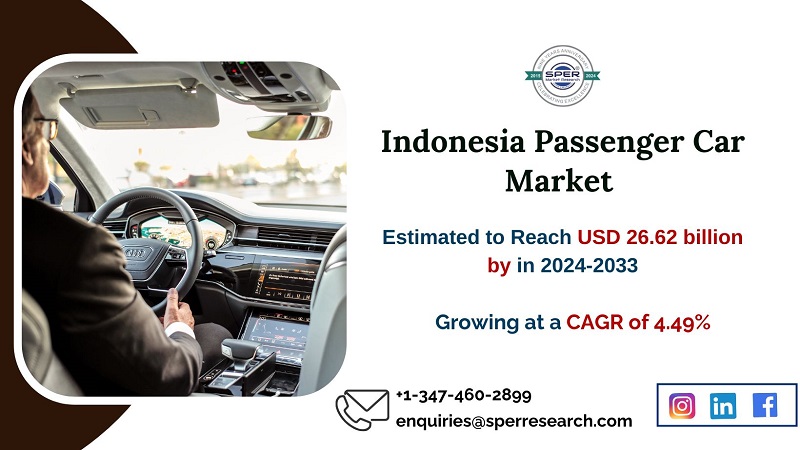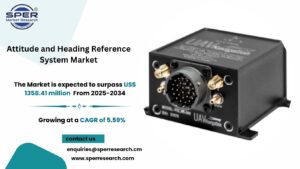Indonesia Passenger Car Market Growth 2024, Rising Trends, Revenue, CAGR Status, Key Manufacturers, Challenges, Future Opportunities and Forecast till 2033: SPER Market Research

Passenger cars are among the most widely used forms of transportation globally, serving as essential tools for daily commuting and travel. Recent advancements in automotive technologies, such as Advanced Driver Assistance Systems (ADAS), have significantly enhanced safety and convenience for drivers. The growing preference for eco-friendly transportation options has spurred demand for passenger vehicles, particularly electric cars. In developing countries, rising per capita incomes are making car ownership more accessible, contributing to the increasing number of passenger cars.
However, the passenger car market is highly influenced by economic conditions, which can impact vehicle affordability for consumers. Furthermore, continuous investment in research and development (R&D) is vital for automotive manufacturers to meet evolving consumer demands and remain competitive in this dynamic industry.
According to SPER Market Research, “Indonesia Passenger Car Market Size – By Propulsion, By Body Type, By Weight – Regional Outlook, Competitive Strategies, and Segment Forecast to 2033” highlights that the Indonesia passenger car market is projected to reach USD 26.62 billion by 2033, growing at a CAGR of 4.49% during the forecast period.
Market Drivers
Several factors are propelling the growth of the Indonesian passenger car market:
- Increasing Middle-Class Income: Rising discretionary income among the middle class enables more individuals to afford personal vehicles.
- Urbanization and Population Growth: As urban areas expand, the demand for accessible transportation increases.
- Government Initiatives: Infrastructure development and policies promoting car ownership, including eco-friendly transportation incentives, are driving market growth.
- Adoption of Advanced Technologies: Consumer interest in innovations like connected vehicles and driver assistance systems is boosting demand for cars with modern features.
Market Restraints
Despite its growth potential, the Indonesian passenger car market faces challenges:
- Economic Instability: Fluctuations in the economy can reduce consumer purchasing power and impact vehicle sales.
- High Costs of Ownership: Expenses such as taxes, insurance, and maintenance can deter potential buyers.
- Infrastructure Limitations: Issues like poor road networks and urban traffic congestion affect vehicle usability and appeal.
- Alternative Transportation Options: Public transit and ride-sharing services compete with private car ownership, reducing demand.
- Regulatory and Environmental Concerns: Stricter regulations and sustainability initiatives may pose additional hurdles for market growth.
For an in-depth analysis, request a free sample report here: https://www.sperresearch.com/report-store/indonesia-passenger-car-market.aspx?sample=1
COVID-19 Impact
The COVID-19 pandemic significantly disrupted Indonesia’s passenger car market, causing a sharp decline in sales due to lockdowns and restricted mobility. Temporary dealership closures also impacted production and supply chains. Moreover, economic uncertainties led consumers to delay major purchases. However, as conditions improved, demand began to recover, with many consumers prioritizing convenience and safety through personal vehicle ownership. This trend is expected to influence consumer preferences in the post-pandemic era.
Regional Dominance and Key Players
The Eastern region dominates Indonesia’s passenger car market. Major industry players include:
- DFSK Motors
- Mitsubishi Motors Corporation
- Nissan Motor
- Suzuki Motor Corporation
- Wuling Motor (SGMW Motors)
Indonesia Passenger Car Market Segmentation:
By Propulsion: Based on the Propulsion, Indonesia Passenger Car Market is segmented as; Internal Combustion Engine, Electric & Hybrid Vehicles.
By Body Type: Based on the Body Type, Indonesia Passenger Car Market is segmented as; Sedan, Hatchback, SUV, Others.
By Weight: Based on the Weight, Indonesia Passenger Car Market is segmented as; Weight (Less Than 3000 Pound, 3001 to 5000 Pound, More Than 5001 Pound.
By Region: This research also includes data for Eastern, Western, Northern, Southern.
For More Information, refer to below link: –
Indonesia Passenger Car Market Forecast
Related Reports:
Follow Us –
LinkedIn | Instagram | Facebook | Twitter
Contact Us:
Sara Lopes, Business Consultant – U.S.A.
+1-347-460-2899








